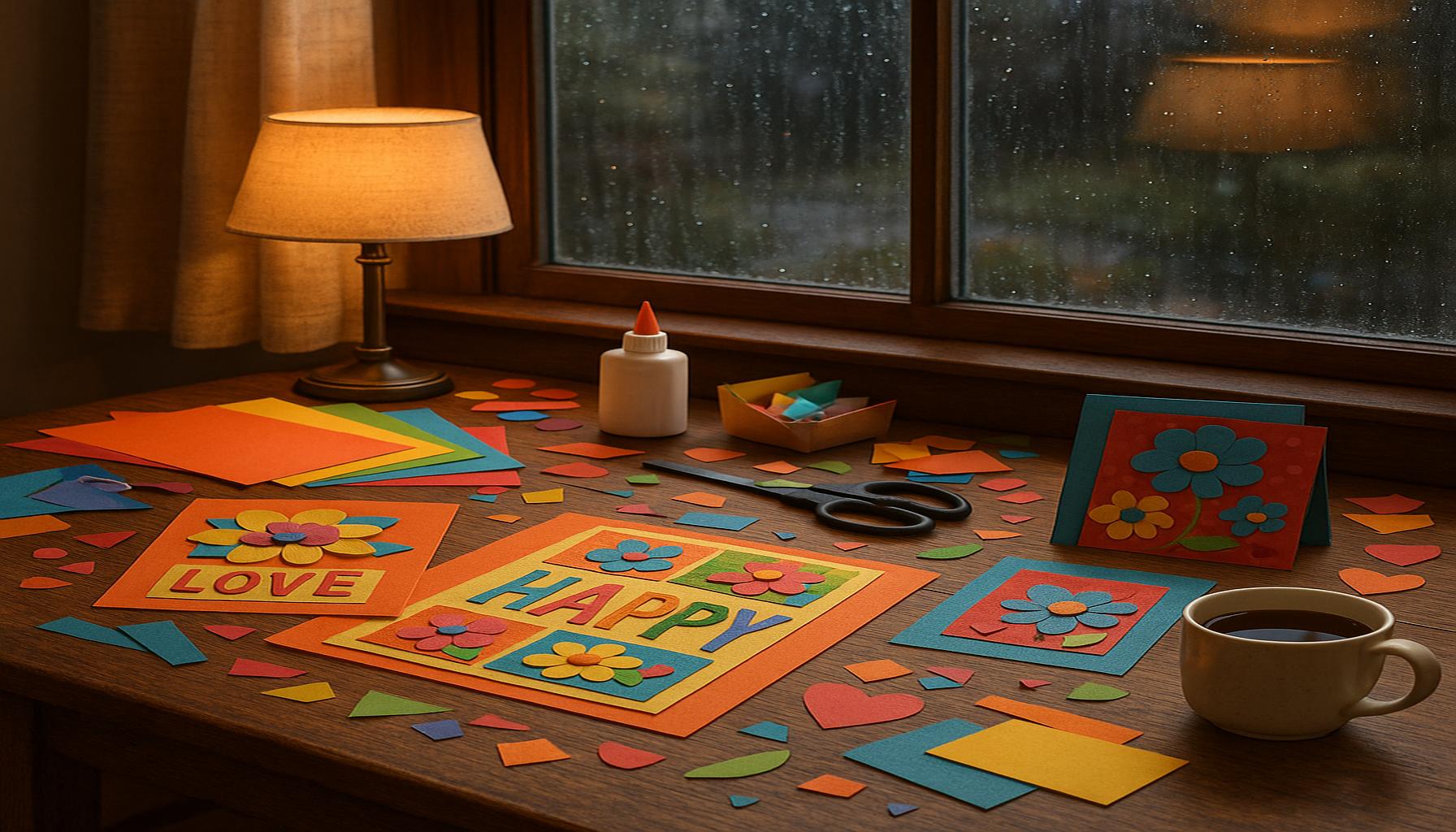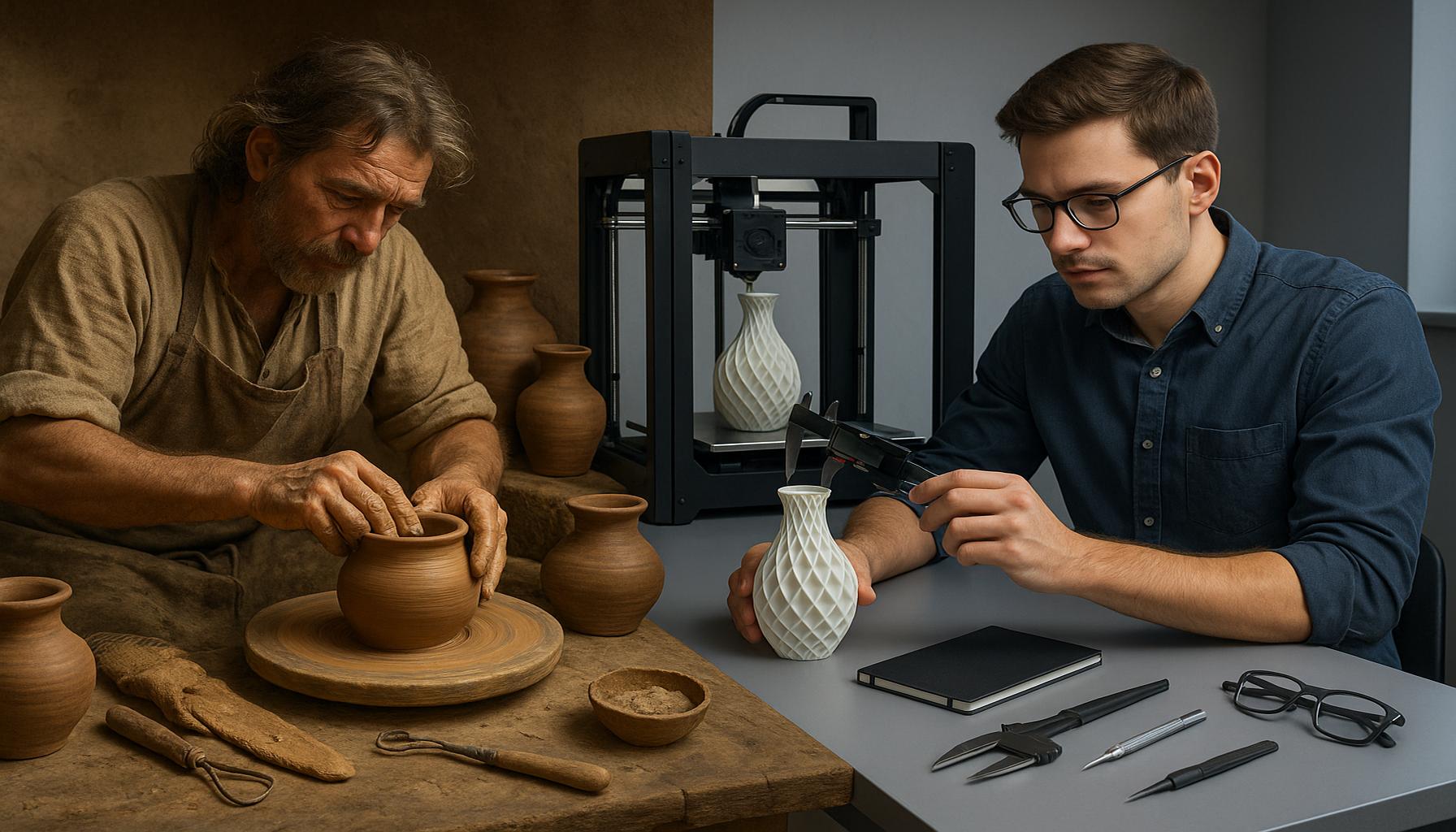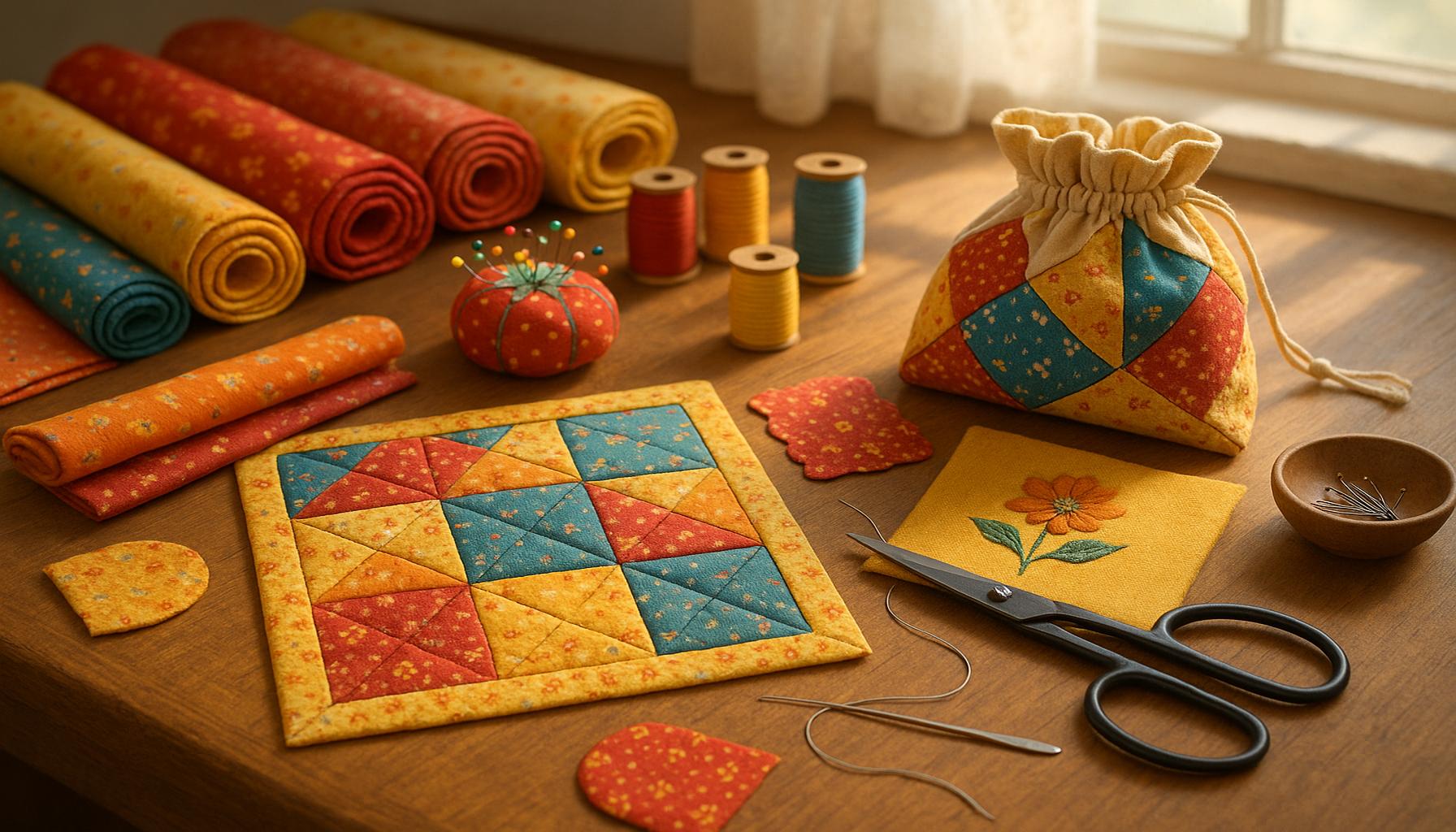The Art of Upcycling: Transforming Recyclable Materials into Crafting Pieces
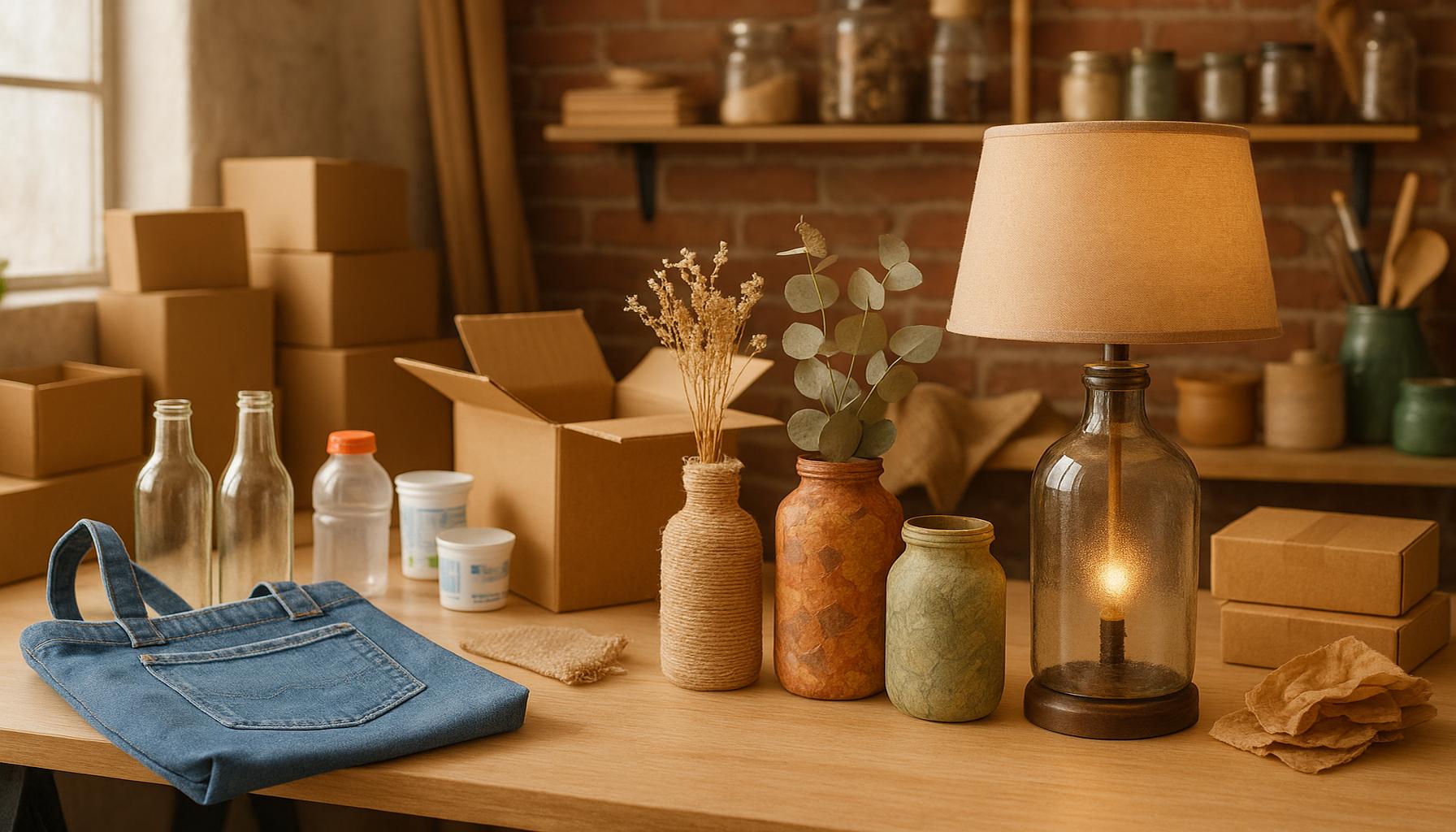
The Rise of Upcycling and Its Impact
Upcycling has rapidly gained traction as a compelling response to the pervasive waste crisis facing our planet. This innovative process revolves around creatively transforming discarded materials into practical or artistic items, effectively preventing these objects from languishing in landfills. By adopting upcycling practices, individuals not only play a role in environmental conservation but also engage in a fulfilling form of self-expression and craftsmanship.
The versatility of upcycling is remarkable; virtually any discarded item can serve as a canvas for creative transformation. For instance, glass bottles, often overlooked after their primary use, can be elegantly revamped into beautiful vases that complement various home styles or made into unique candle holders that add ambiance to any room. The art of refurbishing old furniture allows crafters to breathe new life into neglected chairs and tables, creating vintage-inspired pieces that can become the focal points of a contemporary living space. Even commonplace cardboard boxes can be repurposed into bespoke storage solutions or imaginative art projects, demonstrating that creativity knows no bounds.
Moreover, the potential of textiles in upcycling is significant. Old garments, once destined for disposal, can be transformed into cozy quilts that tell stories of past use or stylish tote bags that not only reduce waste but also showcase personal style and ingenuity. This process not only helps minimize textile waste but also allows individuals to create one-of-a-kind items that cannot be found in stores.
As societal awareness about environmental sustainability grows, the art of upcycling becomes increasingly appealing to both novice crafters and seasoned artisans. Engaging in this creative pursuit helps individuals develop practical skills while actively contributing to a more sustainable future. Each crafted piece serves as a testament to the power of innovation, resourcefulness, and the importance of repurposing what we may consider waste.
Exploring Upcycling Projects
Are you inspired to explore the world of upcycling? The opportunities for innovation are vast and varied. A great starting point could be to delve into online platforms like Pinterest or Instagram, where communities share inspiring upcycling projects and tutorials. From DIY furniture makeovers to crafting home décor, these resources can help guide your creative journey.
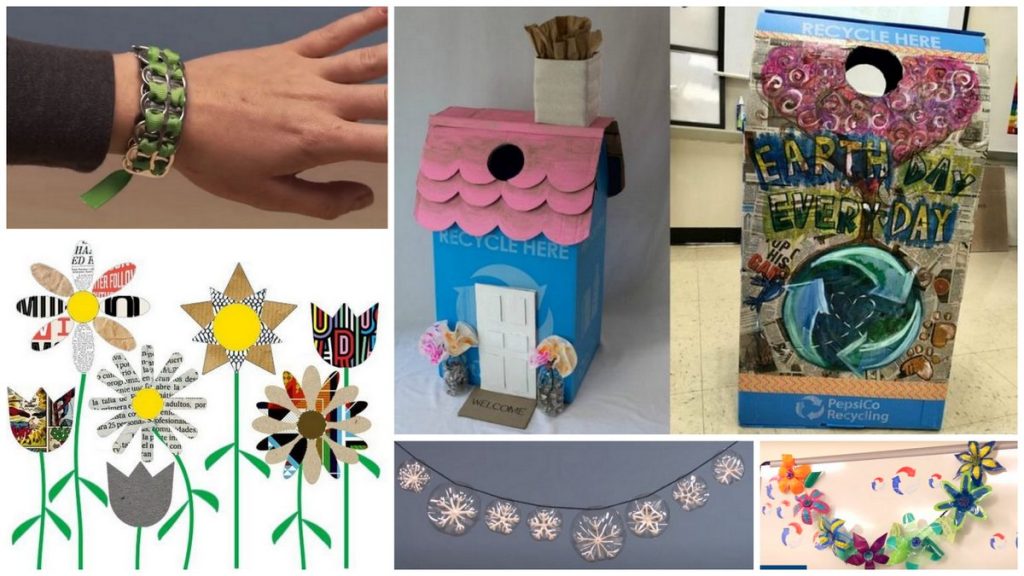
Moreover, local workshops or community groups often host upcycling events, offering hands-on experience and the chance to learn from others. By immersing yourself in this vibrant community, you won’t just develop your skills; you will also become part of a growing movement aimed at reducing waste and celebrating creativity.
In a time when sustainability is more crucial than ever, upcycling stands out as a powerful tool that resonates with both environmental goals and artistic aspirations. Each reimagined item carries an essence of individuality and purpose, urging everyone to look at waste through a new lens, encouraging them to create rather than discard.
DISCOVER MORE: Click here to learn about the evolution of digital photography
Unleashing Your Creativity: Ideas and Techniques for Upcycling
As you begin your upcycling journey, understanding the myriad possibilities can ignite your imagination. The beauty of upcycling lies in its democratization of creativity; anyone can participate, regardless of skill level or artistic background. Whether you’re looking to declutter your home or create something new and exciting, many ideas await your discovery.
One of the most straightforward yet rewarding upcycling projects involves using glass jars. These humble containers can be transformed into stylish storage solutions or personalized candle holders. With a bit of paint or decorative twine, a plain mason jar can evolve into an eye-catching centerpiece for your dining table. Additionally, jars can be adorned with labels or stencils, ensuring each piece reflects your individual style while serving a practical purpose.
For those interested in giving furniture a facelift, consider the potential within your old items. Refurbishing furniture can be a fulfilling project that not only beautifies your living space but also helps preserve the essence of a classic design. Techniques such as painting, distressing, or reupholstering can turn a weathered dresser into a statement piece. Here are a few engaging ideas to start with:
- Palettes and Crates: Repurpose wooden pallets into rustic coffee tables or storage crates that add character to your home.
- Old Chairs: Transform mismatched chairs into a cohesive set by sanding them down and applying a fresh coat of paint, or upholster them with bold fabrics for a pop of color.
- Dressers: A deep clean and a touch of paint can completely rejuvenate a tired dresser, adding new hardware to create a contemporary look.
Another exciting area for upcycling is textiles. The textile industry is one of the largest contributors to environmental waste, making it crucial to find ways to reuse old clothing. Beyond basic repairs, creative upcyclers can cut up old T-shirts to craft new garments, like a trendy tank top or a stylish scarf. Think about how much joy it could bring to transform outdated clothes into functional items while minimizing waste. Projects could include:
- Patchwork Quilts: Stitch together fabric scraps from old garments to create a unique quilt that captures memories.
- Tote Bags: Breathe new life into old jeans by converting them into sturdy tote bags for groceries or daily essentials.
- Rug Mats: Weave together strips of fabric or worn-out textiles, forming an eye-catching and cozy rug for your home.
Once you’ve found inspiration for your next project, take time to gather the necessary materials. Local thrift stores, garage sales, or even your own home can provide a treasure trove of items waiting for a second chance. Engaging in the art of upcycling not only channels your creativity but also results in unique pieces that serve a purpose, making it an art form with both environmental and personal impact.
| Advantages | Description |
|---|---|
| Environmental Conservation | Upcycling reduces waste, leading to less pollution and a sustainable lifestyle. |
| Cost-Effective Creativity | Transforming recyclables into crafts saves money while encouraging creative expression. |
Exploring the world of upcycling opens doors to innovation and sustainability. Through various DIY projects, individuals can rediscover the value of discarded materials, turning what was once considered trash into treasures. For instance, old glass jars can be transformed into artistic lanterns or planters, while fabric scraps can become beautiful quilted pieces. This not only showcases one’s ingenuity but also contributes significantly to environmental conservation. By actively participating in upcycling, individuals play a part in reducing landfill waste and pollution, enhancing our planet’s health.Moreover, engaging in upcycling is a financially savvy choice. Craft enthusiasts benefit from the creativity and resourcefulness that arise when working with materials that would otherwise be considered worthless. This practice not only encourages artistic flair but also fosters a sense of community, often leading to workshops and group activities centered around sustainable crafting. Embracing the art of upcycling allows for a fulfilling and budget-friendly crafting experience, inviting everyone to join the journey towards a cleaner, greener future.
DIVE DEEPER: Click here to unlock your creativity
Upcycling in Everyday Life: Beyond Crafting
While personal creativity plays a significant role in the art of upcycling, its impact can spread far beyond the realm of crafting projects. Upcycling promotes a sustainable lifestyle and encourages individuals and families to adopt new habits that reduce waste in everyday life. By integrating upcycling into our daily routines, we can create lasting change, not just within our households, but also for the environment.
Upcycling in Kitchenware: The kitchen offers a plethora of resources ripe for upcycling. For instance, old glass containers, like spice jars, can be transformed into chic storage for dry goods or homemade sauces. You can even use colorful labels to organize pantry items creatively. Furthermore, wine corks can become quirky coasters or even bulletin boards when affixed to a frame. Such simple projects not only enhance the aesthetics of your kitchen but also minimize the need for purchasing new products.
Transforming Office Supplies: In an increasingly digital world, an often-overlooked area for upcycling lies within office supplies. Consider reevaluating those old binders and folders. With a touch of creativity, they can be repurposed into stylish organizers for notebooks or craft supplies. Additionally, cereal boxes can be transformed into desk organizers that hold pens, scissors, and other essentials. This method not only helps declutter your workspace but encourages a creative and functional environment.
Incorporating Upcycling in Home Decor: Beyond furniture and textiles, decor items can significantly benefit from upcycling as well. Old windows can be converted into stunning wall art or photo frames that add rustic charm to your home. Broken chairs can be altered into functional plant stands or decorative pieces that accentuate your garden or indoor spaces. With DIY projects like these, your home decor can become a personal statement while reducing your carbon footprint.
The Benefits of Upcycling
As you explore the artistic possibilities of upcycling, it’s important to understand the broader implications of your efforts. Upcycling reduces landfill waste, conserves energy, and minimizes the reliance on new materials, which often come with significant environmental costs. According to the Environmental Protection Agency (EPA), recycling and composting prevented the release of approximately 186 million metric tons of carbon dioxide equivalent into the air in 2019. By upcycling, you contribute to this admirable statistic particularly when you creatively repurpose items rather than dismiss them as trash.
Moreover, upcycling fosters community engagement. Many cities in the United States host upcycling workshops, allowing local residents to come together, share ideas, and learn new skills. These community-centered initiatives are not only great for cultivating creativity but also for fostering connections among neighbors who share common interests in sustainability and art.
Supporting Local Economies: Upcycling can also be a business opportunity. Many artisans have built successful brands around upcycled products, ranging from fashion accessories crafted from discarded materials to home decor that tells a story of rebirth. In this way, upcycling not only contributes to personal creativity and environmental sustainability but also stimulates local economies by encouraging small businesses that prioritize sustainable practices.
By embracing upcycling as a practice both at home and in your community, you can unlock new realms of creativity. With each project, you contribute to a larger movement that champions sustainability and celebrates the art of transformation, reminding us that what was once deemed useless can be reimagined into something truly beautiful.
DISCOVER: Click here to dive into the power of storytelling
Conclusion: Embracing the Transformation
In conclusion, the art of upcycling serves as a powerful reminder of our ability to transform the ordinary into the extraordinary. By creatively repurposing recyclable materials, we not only enhance our surroundings but also play a vital role in advocating for a sustainable future. Every upcycling project—from custom kitchenware to unique home decor—embodies a commitment to reducing waste and preserving resources, making a tangible impact on our planet.
As we adopt upcycling into our daily lives, we cultivate a sense of responsibility toward the environment while also igniting our creative potential. The diverse opportunities within this practice encourage individuals and communities to engage with one another, fostering connections that celebrate sustainability and innovation. Initiatives like local upcycling workshops reinforce this bond, providing spaces for collaboration and learning, ultimately leading to a shared vision of an eco-conscious society.
Moreover, the rise of businesses focused on upcycled products showcases the economic benefits of this artistic movement. By choosing to support local artisans who prioritize sustainability, consumers can contribute to a circular economy that values creativity and environmental stewardship.
Embracing the art of upcycling is more than merely a trend; it’s an invitation to rethink our consumption habits and reconnect with the materials around us. As we embark on this journey of transformation, let us recognize the beauty in what is often overlooked, turning cast-offs into treasures, and together, pave the way for a cleaner and more sustainable future.

